In the summer of 2025, something strange happened at the Gateway of India. Not the usual parade of tourists positioning themselves for identical selfies against the colonial arch, nor the familiar sight of vendors hawking miniature monuments to visitors who already possessed dozens.
This disruption was subtler, and—when one tallied up the media buy and award-worthy animation—infinitely more expensive: a small animated boy, habitually depicted in oversized gloves, tiptoed through the city’s faded grandeur, pausing to remove them. For it’s only when his bare fingers finally brushed the stone that Mumbai’s most photographed landmark bloomed into impossible colour. Within seconds, an everyday world was made radiant, not by brush or can, but by the latent alchemy in a child’s touch.
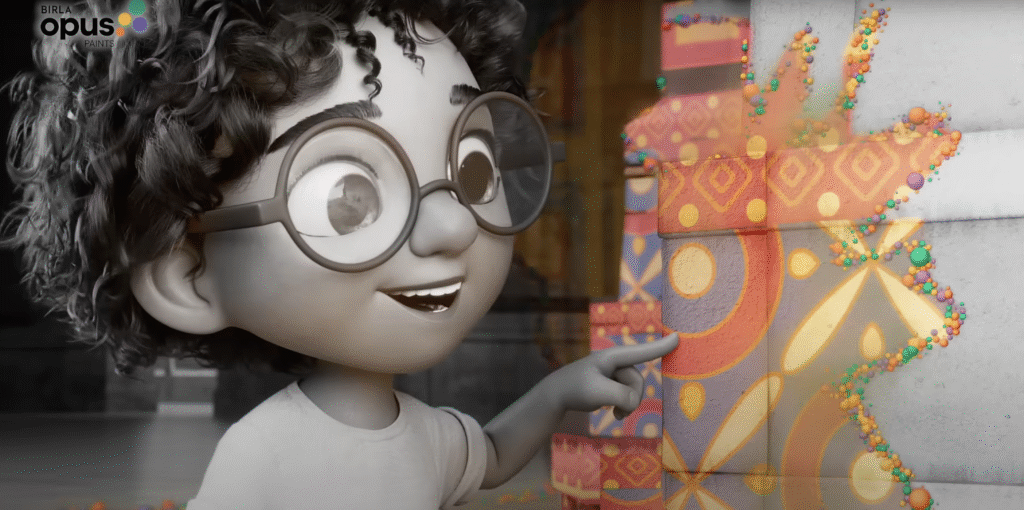
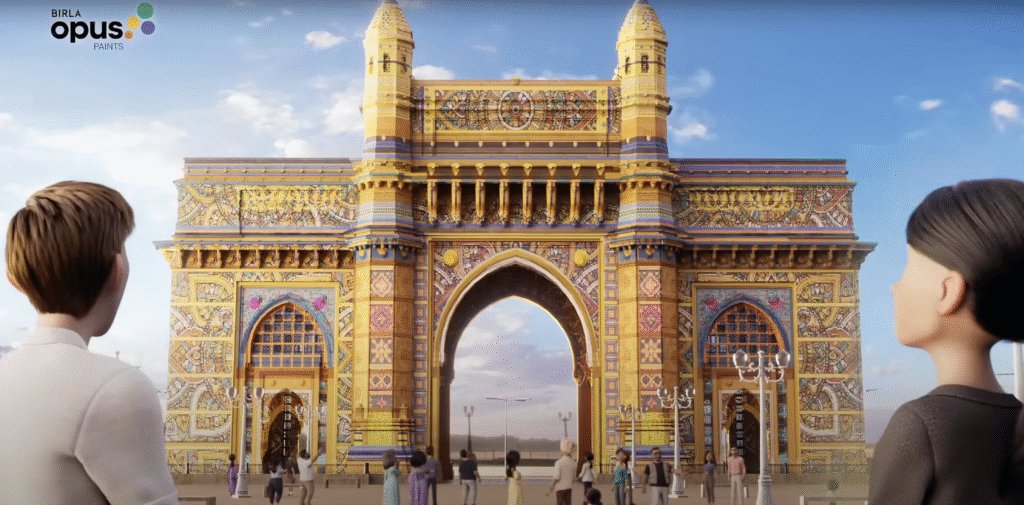
The boy—Opus Boy, as he has come to be known in advertising circles—exists only in the digital realm, a pixel offspring of Brazil’s Zombie Studio, a production house that has amassed more international acclaim than many minor celebrity chefs, and recently found itself crowned Production Company of the Year at both ADC New York and the New York Festivals.
Yet his effect on India’s ₹1,00,000 crore paint industry has been resolutely material. Within a single year, Birla Opus Paints, the brand he so wordlessly champions, seized 6.8% of the market—a feat that required Asian Paints, the perennial heavyweight, to watch its dominance flake away, from 59% to 52%.
The Inadvertent Anthropologist
There is something delightfully absurd about commissioning a studio in São Paulo to animate the transformation of India’s cultural monuments for the purpose of selling house paint. Zombie Studio, founded in 2012 by Paulo Garcia, began almost accidentally—a quirk that speaks to the serendipity of creative excellence. Their portfolio leaps from commercial campaigns to music videos for Moby and Gorillaz, a restlessness that sometimes yields the perfect marriage of commerce and cultural sensitivity.
When Leo Burnett India handed Zombie the Birla Opus brief—distinguish the brand in a market clogged with celebrity endorsements and generic lifestyle messaging—the answer was part anthropology, part reverie. Not just another ad, but a meditation on transformation, community, and the peculiar power of colour to rewire perception.
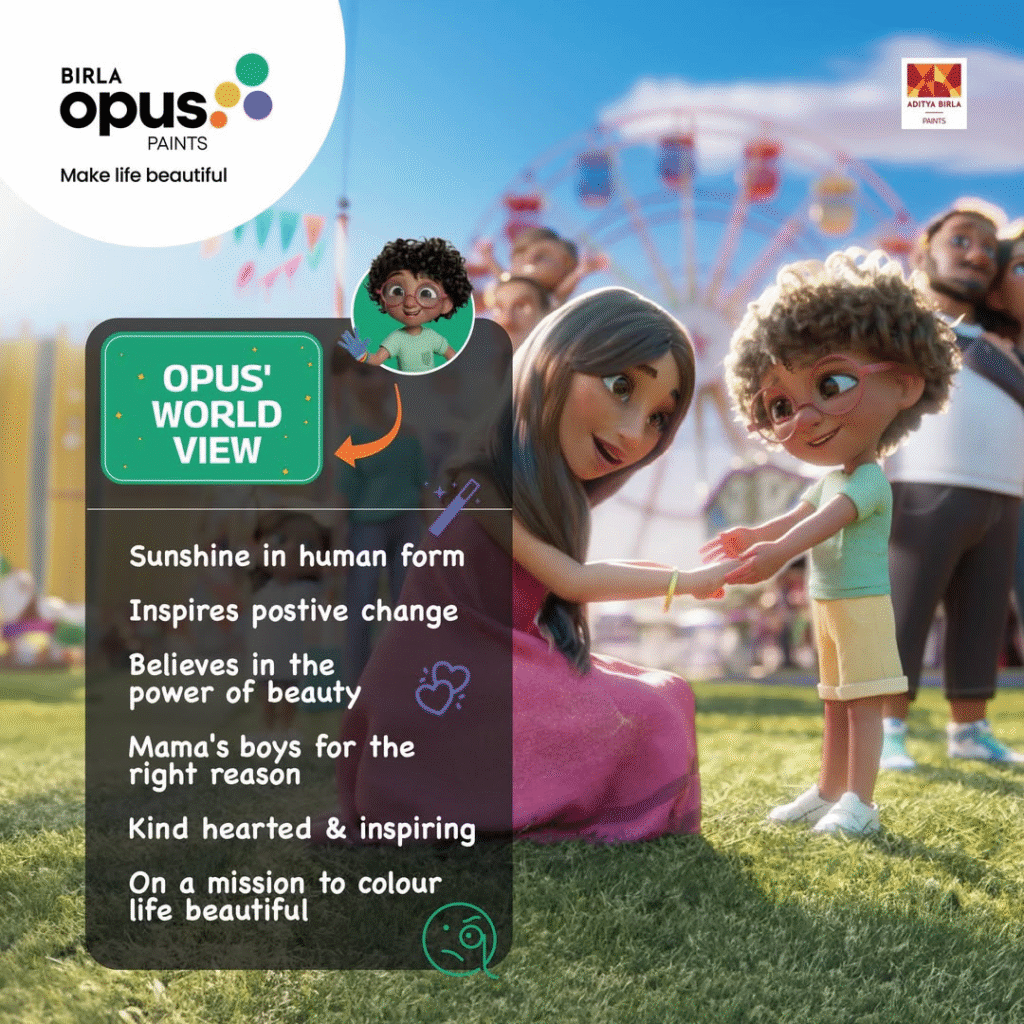
Animation, as Rajdeepak Das of Publicis Groupe South Asia remarked, sidestepped the perils of star-misidentification. “Birla Opus is a brand designed for today’s dynamic new Indian audiences, and we wanted to give the campaign a fresh and innovative approach”. Animation invents its own universe, immune to the reputational hurricane that can follow cricket stars.
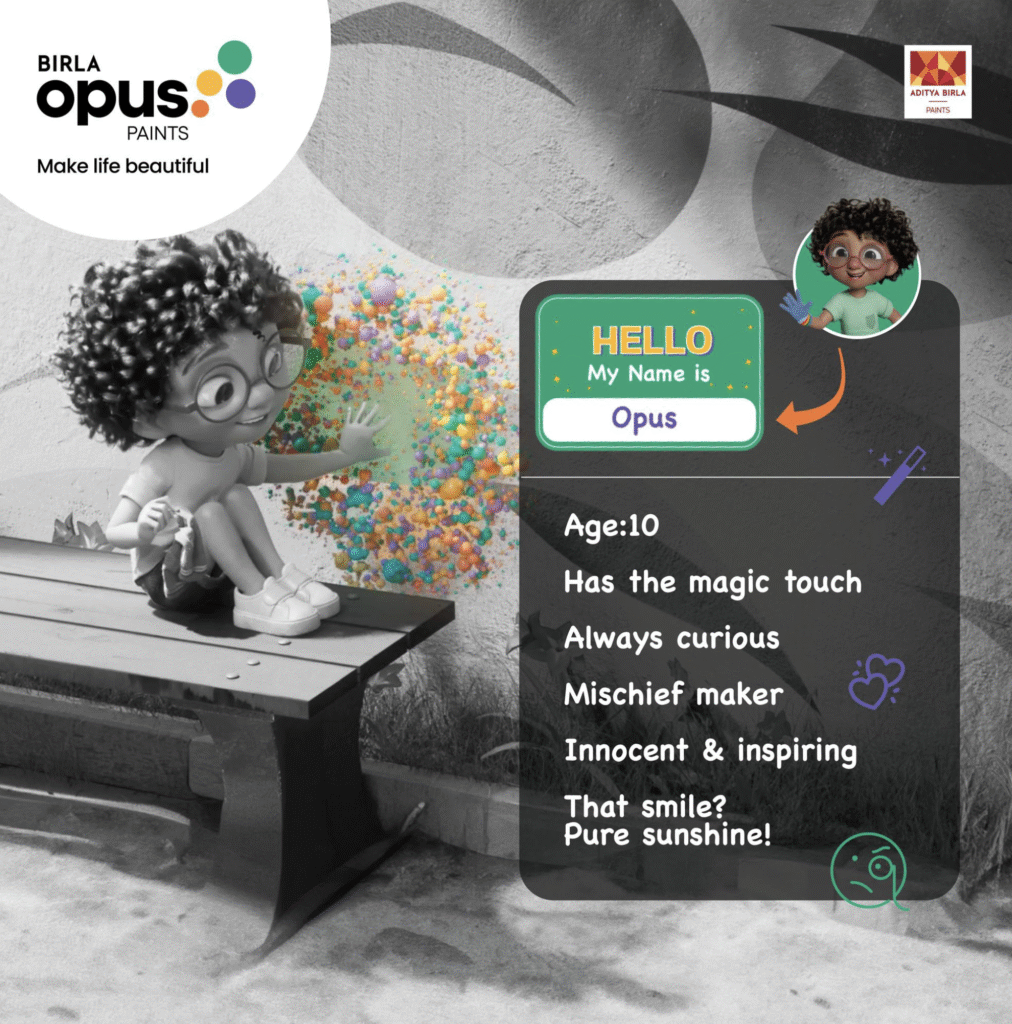
The Composer’s Ten-Minute Symphony
The campaign’s musical foundation deserves particular attention, if only for the speed with which it arrived. Ram Sampath, the composer behind the “Duniya Ko Rang Do” (Color the World) theme, wrote the track ten minutes after his first meeting with the Birla Opus team. This suggests either the hand of genius or the kind of creative lightning that strikes when commercial brief meets artistic inspiration—possibly both.
Sampath, whose career zigzags from ad jingles to Bollywood scores (“Delhi Belly,” “Talaash”), refers to his approach as an “obsession with sound textures”. Munna Dhiman, his frequent collaborator, supplies lyrics that are at once simple and gently profound, delivering what Sampath called “absolute joy because you rarely get to work with such beautiful storytelling”.
How to measure its success? Dealers started setting the melody as their ringtones. In an age of micro-targeted campaigns, such organic adoption—music as mnemonic—suggests the campaign’s message infiltrated daily routine, transcending its intent to advertise and lodging itself trouble-free in the national ear.
The Monument as Marketing Canvas
To animate India’s monuments—Gateway of India, Jaipur’s filigreed Hawa Mahal—demanded both bravado and delicacy. Zombie’s reimaginings liberate these icons into color, without trespassing on reverence. The Hawa Mahal, built in 1799 by Maharaja Sawai Pratap Singh, with its 953 windows for the unseen gaze of royal women, stands not just restored but renewed. Yet, the real colour revolution occurs around the monument: Opus Boy brings joy to the clean-up marshals, the hands who keep history upright.
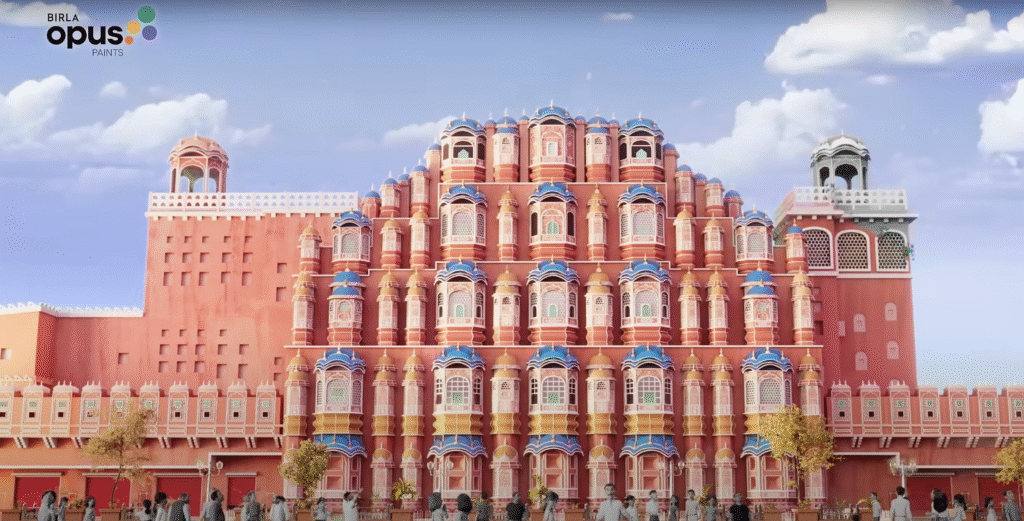
The campaign sidesteps architectural defacement in favour of emotional renewal.
Inderpreet Singh, Birla Opus’s Head of Marketing, explained it as “a powerful story of hope, reminding every Indian of the beauty around them”. In a newly assertive India, heritage now means not just preservation, but joyful intervention.
The Algorithmic Disruption
Timing, as always, was everything. Birla Opus entered the fray in February 2024, backed by a ₹10,000 crore Aditya Birla Group investment. This was not a mere upstart, but a player aiming to yank capacity up by 40%—and with it, the industry’s old equilibrium.
Beyond the emotional fireworks, the company recalibrated practical things: 40%-smaller tinting machines for tinier towns, dealer margins of 10-12% compared with Asian Paints’ 4-5%, incentives for painters ranging from ₹100 to ₹600 per 20 liters. These are not poetic but they are decisive: the invisible gears through which sentiment is made real.
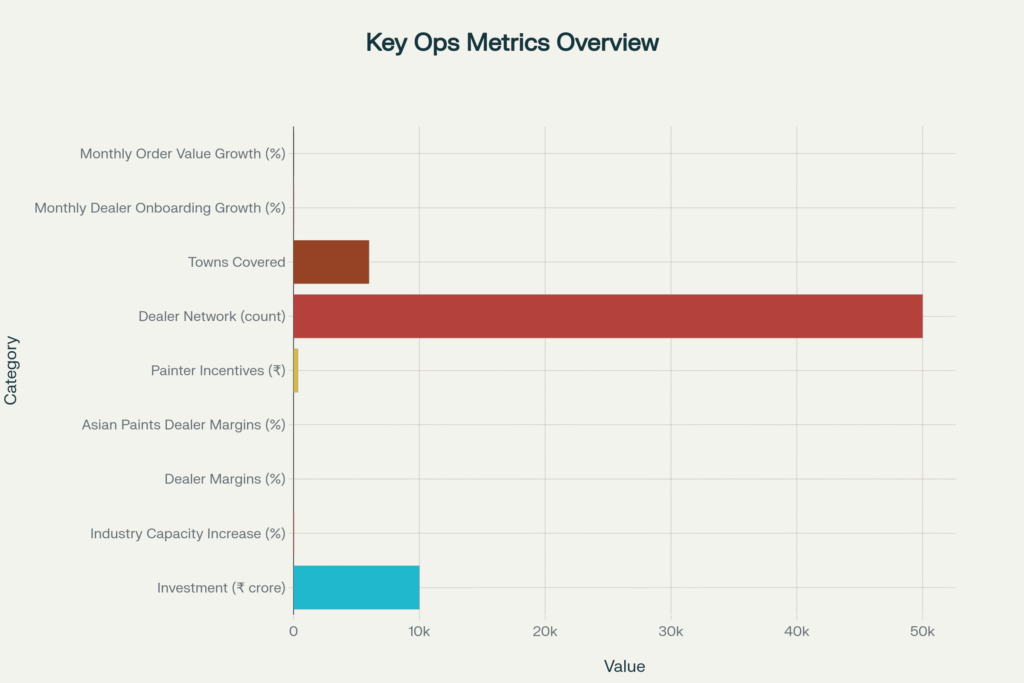
Within twelve months, the dealer network sprawled: 50,000+ dealers, 6,000+ towns, 36% monthly onboarding growth, 32% spike in order values. These numbers confirm what the films only hint at—gloves may come off in the commercials, but the company’s so-called “soft power” packs plenty of economic punch.
The Paradox of Authenticity
The campaign pokes at the issue of authenticity in the digital age. Opus Boy, born not of flesh, but of pixels and storyboards, is now more widely recognised than many living endorser. His gloved hands aren’t magical in themselves; they sheath the real magic within. It’s when he dares to go barehanded that colour erupts—thus his gloves become a narrative delay, not a source of power.
Zombie’s “Pixar-quality” techniques create a feeling of hyperreality—images that are, paradoxically, more moving than the truth. When Opus Boy touches the Gateway of India and it flares into colour, it’s neither fact nor fantasy, but a commercial dream-state: vivid as memory, impossible as myth.
Crucially, the focus lands not only on monuments, but on the humans nearby—photographers puzzling over empty frames, marshals working in the glare of forgotten heritage. Real tensions, answered by gentle fantasy.
Opus Boy Comes Home
You could almost miss him, pausing mid-scroll: a child no taller than a paint can, fingers sheathed in those now-famous gloves, wandering off as mothers have always feared. Only when he slips them off—risking scold, trusting instinct—does the miracle begin. Lampposts, fences, even a sleepy stray dog, all yield to his touch. Colour splash like a time-lapse bloom, fast yet strangely tender. By the time he returns, the alley is carnival-bright, and even his skeptical mother regards the transformation, barefoot on a teal doorstep, with a silent, astonished pride.
This latest vignette, “Make Life Beautiful,” abandons grand history for small domestic stakes. There are no monuments here—just cracked plaster, rusted bicycles, puddles that catch marigold light. The child’s alchemy is as strategic as it is sentimental: a nudge toward every viewer who wonders if Saturday chores might be a form of quiet heroism.
If earlier films unfurled like operas, “Make Life Beautiful” is a piano étude—brief, containing wonder, content to leave its final chord unresolved. No slogan intrudes; no can of paint winks at the camera as credits roll. The world remains imperfect, but imperceptibly brighter—enough to provoke a second, softer viewing.
The Economics of Enchantment
The numbers underpinning this fairy tale are not insubstantial. Birla Opus’s rapid market capture eroded the old order: Asian Paints’ Q4 profit fell by 45%, and the sector, long anaesthetized by tradition, suddenly found itself in unaccustomed flux. Long-term prospects are undimmed: India’s paint industry is forecast to triple within a decade, driven by urban ambition and, perhaps, a sudden craving for cinematic colour.
For advertisers, the campaign is a case study in the power of big budgets plus even bigger vision.
Leo Burnett and Zombie Studio synthesised entertainment, cultural commentary, and selling proposition into a single, seamless scroll.
The Future of Fictional Spokesmen
As Birla Opus expands the Opus Boy universe—more monuments, more neighbourhoods, Holi-themed cameos—the risk, as always, is repetition. But the character’s power is in his humility. He does not shout. He removes his gloves—takes a risk, makes a mark, departs.
Product categories may change (waterproofing, wood finishes, wallpapers), but the campaign’s big idea is not easily duplicated: difference, not in can or formula, but in the story one tells about change and hope.
Birla Opus has made itself not just a brand, but a belief system: that colour is transformation, and transformation belongs to anyone willing to touch the drab and risk something warmer.
Epilogue: The Persistence of Wonder
Advertising rarely changes the world. But sometimes, by the time the ad fades, you find yourself blinking at your own streetscape, wondering whether a child with a secret power just passed you by. In the division between magic and marketing, sometimes the only real difference is who’s willing to take their gloves off.
PS: In an odd twist of online myth, many people continue to reference Opus Boy’s “magic gloves.” In fact, the gloves are not the source of his power; they restrain it. His transformative colour magic appears only after he removes them—much like Elsa, whose powers awaken when her hands are unveiled. Please, if you wish to credit the magic, credit the fingers.
Sources:
: https://www.campaignindia.in/video/colour-me-heritage-birla-opus-paints-indias-monuments/503421
: https://www.adityabirla.com/media/press-releases/birla-opus-paints-celebrates-indian-heritage-through-the-power-of-colour/
: https://br.linkedin.com/company/zombie-studio-ltda
: https://www.linkedin.com/pulse/lets-understand-indias-paint-industry-ajay-rathore–xse4c
: https://www.ndtvprofit.com/business/birla-opus-sees-68-market-share-by-march-paint-demand-still-elusive
: https://in.investing.com/news/stock-market-news/birla-opus-aggressive-strategy-erodes-asian-paints-market-lead-sebi-ra-saurabh-sahu-4867601
: https://zombiestudio.tv/project/opus-paint
: https://www.campaignindia.in/video/birla-opus-feel-good-animated-film-paints-a-new-brand-message/496773
: https://brandequity.economictimes.indiatimes.com/news/advertising/birla-opus-embarks-on-a-journey-to-make-life-beautiful/111089054
: https://timesofindia.indiatimes.com/entertainment/hindi/music/news/ram-sampaths-obsession-with-sound-textures-in-music-composition/articleshow/112736744.cms
: https://en.wikipedia.org/wiki/Ram_Sampath
: https://www.grasim.com/media/press-releases/birla-opus-paints-celebrates-indian-heritage-through-the-power-of-colour
: https://en.wikipedia.org/wiki/Hawa_Mahal
: https://www.medianews4u.com/birla-opus-paints-brings-jaipurs-hawa-mahal-to-life-in-latest-celebrating-colours-of-india-film/
: https://www.adityabirla.com/en/businesses/companies/birla-opus-piants/
: https://upstox.com/news/market-news/stocks/paint-sector-outlook-2025-can-giants-like-asian-paints-survive-the-rising-competition/article-137706/
: https://www.researchandmarkets.com/reports/4992261/india-paint-industry-outlook-2025
: https://www.medianews4u.com/birla-opus-paints-holi-campaign-reminds-us-that-colors-can-change-lives/
: https://www.passionateinmarketing.com/birla-opus-paints-spreads-the-colors-of-happiness-this-holi-with-its-new-heartwarming-holi-campaign/
